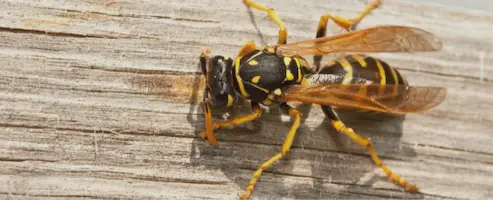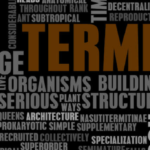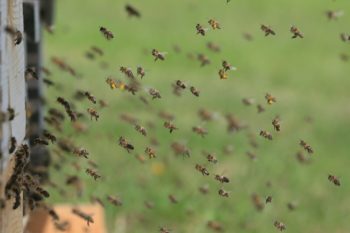
Stinging insects are concerning not only for the pain of their sting, but also because they can cause severe allergic reactions for some people. If a reaction occurs, visit an emergency room immediately and always carry epinephrine.
In Tennessee, we have a range of insects known for their sting. Learn about the top stinging insects you need to be concerned about in Memphis and our best tips for how to handle them:
Paper Wasps
Tennessee hosts several paper wasp species with the most common being northern paper wasps. These wasps have large mandibles to strip wood and bark from trees. They chew the fibers and mix it with their saliva to make “paper.” This paper is used to construct nests under roofs, awnings, and tree branches.
Paper wasps are very defensive around their nests, but rarely sting when searching for food or wood. Adults typically feed on nectar but also capture caterpillars to feed developing larvae.
Red Wasps
Red wasps are true to their name with red bodies which can grow as large as one inch. They cohabitate together in big families and build large umbrella-like nests in areas with protection against the environment. Like any wasp, they are capable of stinging multiple times when threatened.
Wasps are attracted to bright colors, loud noises, and the smell of sweet perfume and food. Avoid leaving food out which can entice wasps to join the party.
Bald Faced Hornets
Tennessee is home to four species of bald-faced hornets. They get their name from their black color and mostly white face. Oddly enough, these stinging insects aren’t considered “true” hornets. Some refer to them as “aerial yellow jackets” as these large wasps are very similar to their closest relative.
While less aggressive than their ground-dwelling relatives, they will attack anyone or anything that invades their space. This can make removing hornet nests very difficult. Their smooth stingers can sting multiple times, and their venom makes the sting hurt, itch, and swell for about 24 hours.
European Hornets
The one true hornet species is the European hornet which came to New York from Europe in the 1800s. They make their nests in attics, out buildings, barns, and hollow trees.
Their stingers can grow as large as 1 ½ inches and are active day or night. While less aggressive than others, their stings can cause itching and swell for nearly 24 hours.
Yellow Jackets
Yellow jackets are easily recognized by their yellow bodies and black stripes. While often confused for bees, they exhibit very aggressive behavior and are capable of attacking more than once. They eat other insects when hungry, but are drawn to sweet drinks, candy, and food.
Yellow jacket nests are in the ground or rotting logs with potentially thousands in one colony. If you see yellow jackets coming out of the ground, you likely found a nest and should stay far away. Yellow jackets are known to cause several deaths each year.
Velvet Ants
Velvet ants, or “cow killers,” aren’t ants at all. They’re actually wasps. If you see these fuzzy bodies with black and red stripes running along the ground, don’t step on them barefoot. Their sting is painful.
These solitary creatures tend to travel alone and make their homes in nesting chambers of ground-dwelling bees and wasps. After their eggs hatch, their larvae will eat the host. This insect is certainly not one to mess with!
Dealing with Stinging Insects
When their nests are in danger, these stinging insects will not hold back. To remove hornet, wasp, or bee nests from your property, always make an appointment for professional pest control services to protect you and your family from being attacked.
Need wasp control services in Tennessee? Call Inman-Murphy Termite & Pest Control today at 901-388-0852.



